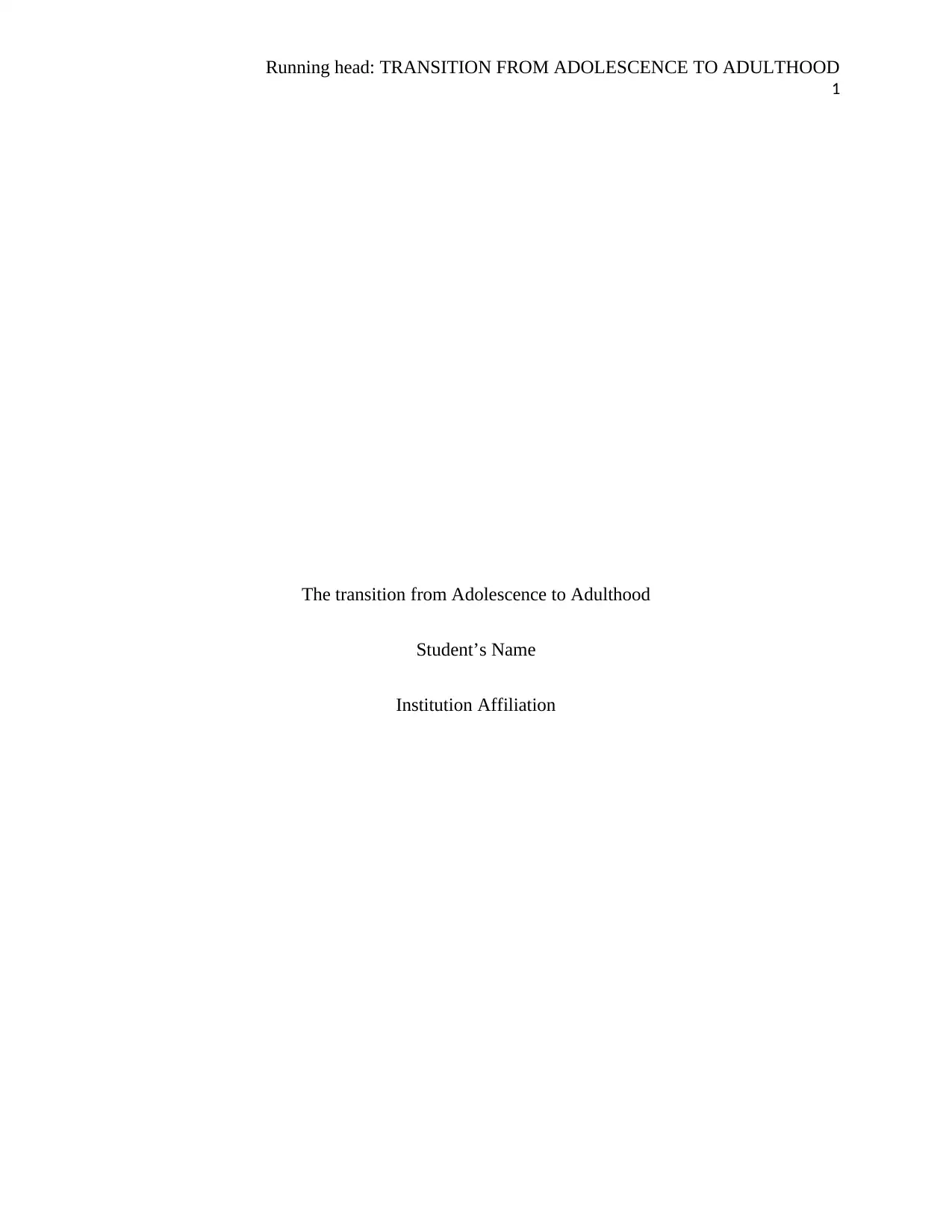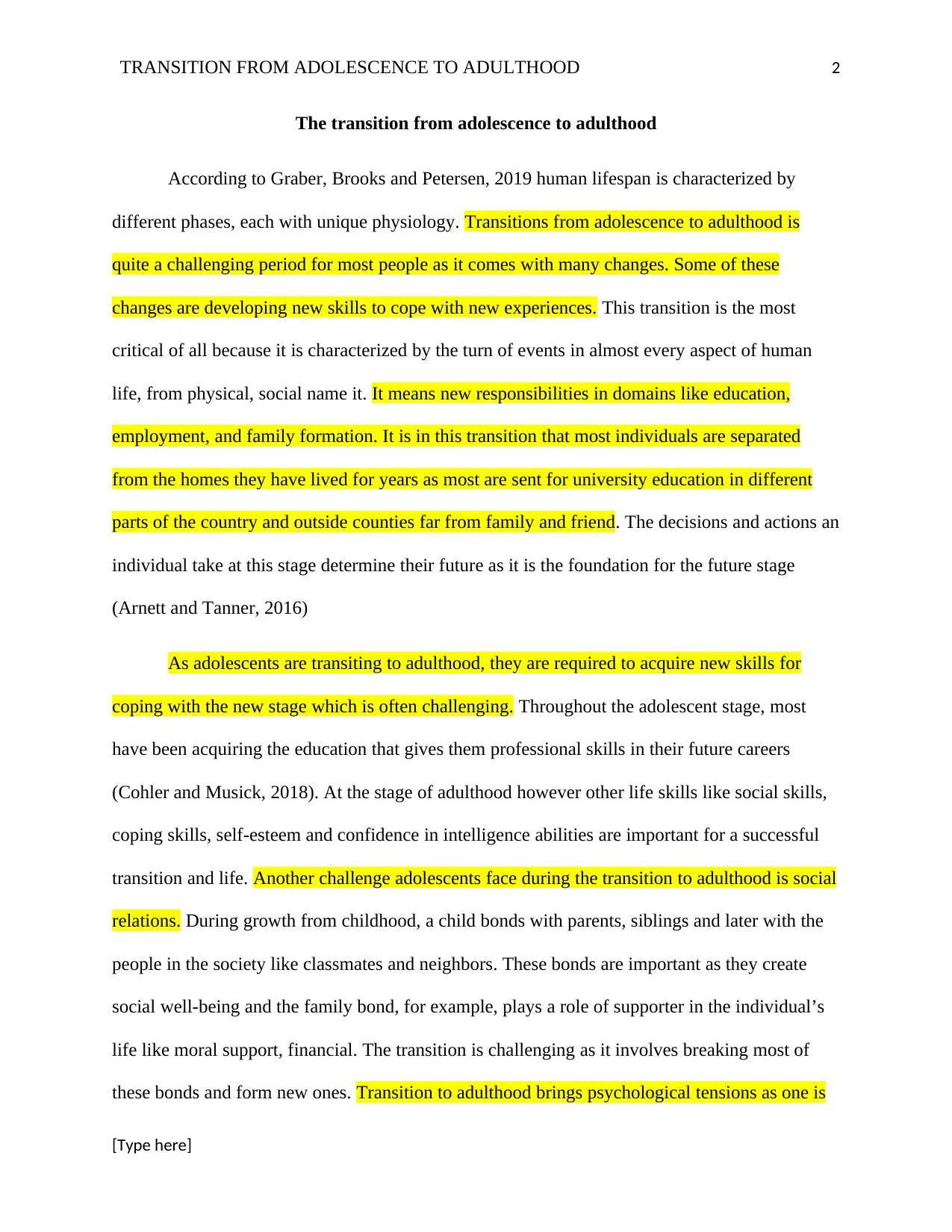Challenges and Changes: Transition from Adolescence to Adulthood
VerifiedAdded on 2023/03/20
|4
|851
|32
Essay
AI Summary
This essay examines the transition from adolescence to adulthood, a period marked by significant physiological, social, and psychological changes. It highlights the challenges individuals face, including acquiring new coping and social skills, adapting to new responsibilities, and navigating social relations. The essay discusses the importance of factors like self-esteem and supportive relationships, while also addressing risk factors such as poor social skills and drug abuse. It emphasizes the role of parenting, especially in relation to religious values, in facilitating a successful transition. The essay draws on various academic sources to provide a comprehensive overview of the complexities and challenges inherent in the transition from adolescence to adulthood, emphasizing the need for individuals to develop skills and resilience to navigate this crucial life stage. This assignment is contributed by a student and available on Desklib, a platform offering AI-based study tools, past papers, and solved assignments.
1 out of 4











![[object Object]](/_next/static/media/star-bottom.7253800d.svg)